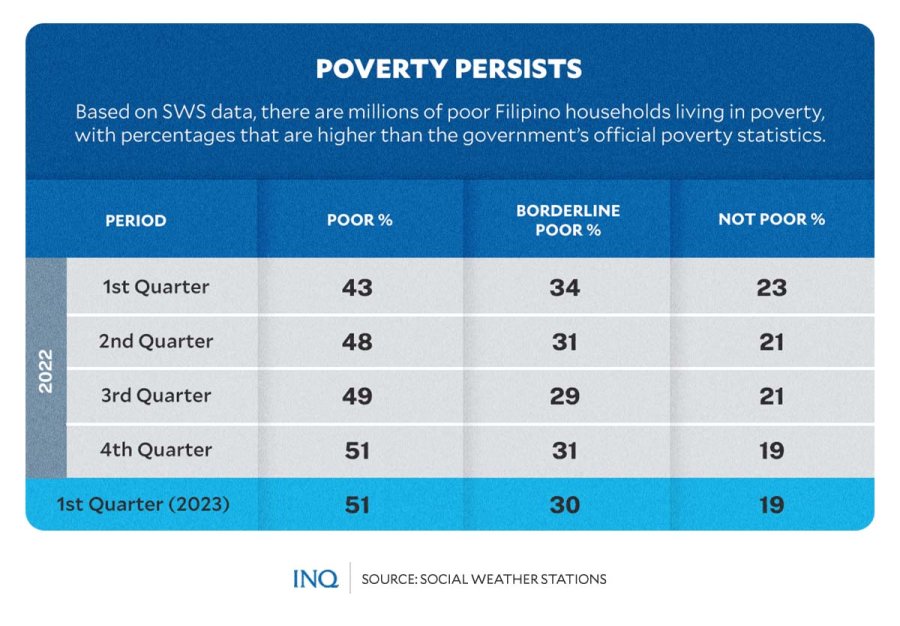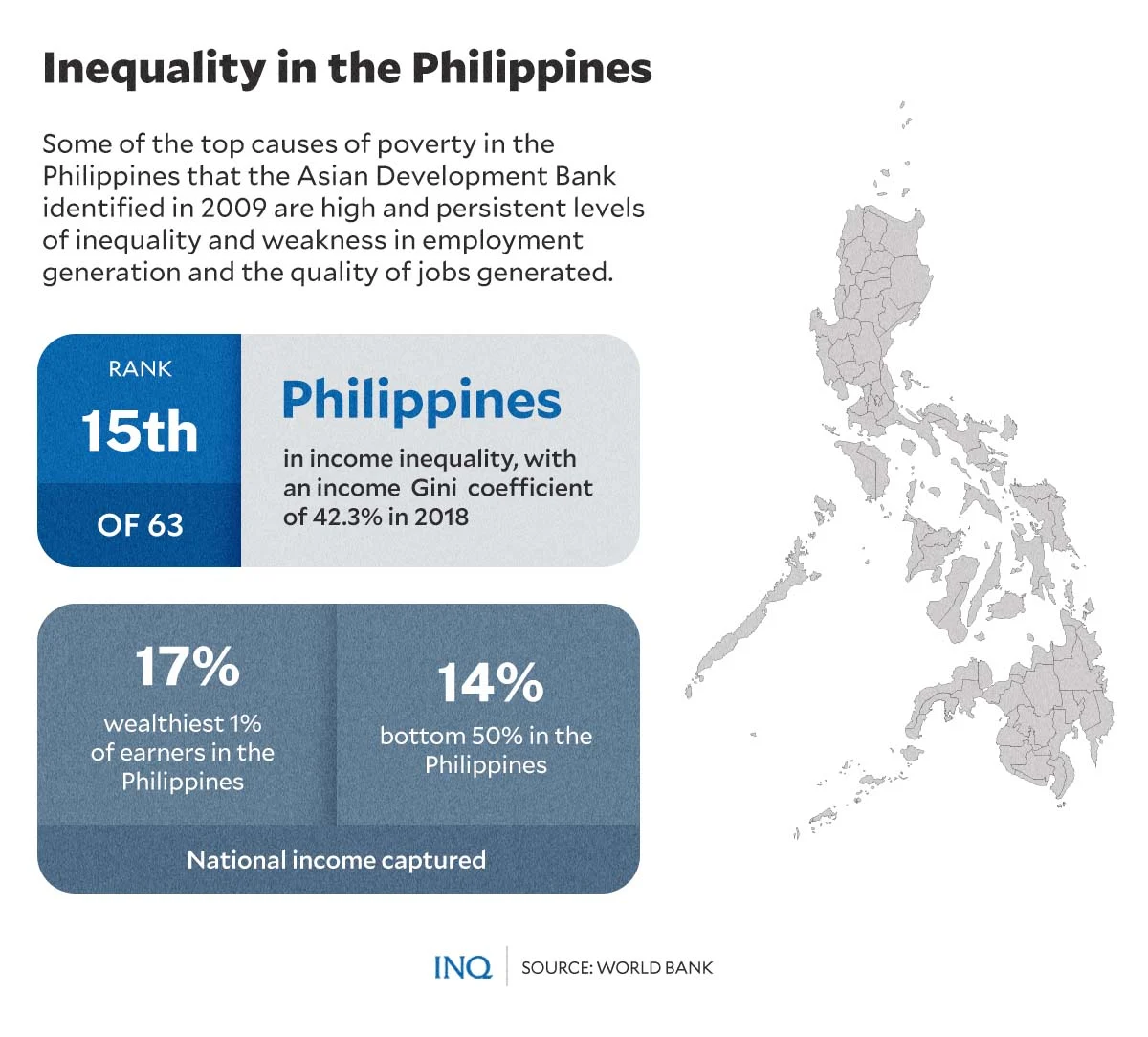June 6, 2023
MANILA – How do we define good governance?
According to the United Nations (UN) Office of the High Commissioner for Human Rights, the “true test” of good governance is the degree to which it delivers on the promise of people’s rights: civil, cultural, economic, political and social.
But there’s a simpler way to define good governance, as stated by Fr. Anton Pascual, executive director of Caritas Manila, the social action arm of the Archdiocese of Manila. It is all about “taking care of the poor and marginalized,” he said.
This was the reason that the signing in 2019 of Republic Act No. 11291, or the Magna Carta of the Poor, was commended as a step closer to making certain that no Filipino is left behind.
As stated in the law, “it is the declared policy of the State to uplift the standard of living and quality of life of the poor and provide them with sustained opportunities for growth and development.”
It was in 2021 when its Implementing Rules and Regulations (IRR) was signed, with then Sen. Leila de Lima, principal sponsor and author of the bill in the Senate, saying that it could be the “game-changer” in the fight against poverty.
This month, however, the law’s amended IRR is expected to be signed by President Ferdinand Marcos Jr. as Lope Santos III, lead convenor of the National Anti-Poverty Commission (NAPC), said “we received proposals for the improvement of the IRR.”
According to Santos on Friday (June 2), the new IRR will be key in realizing the government’s goal of bringing down poverty incidence to 8.8 percent to 9 percent by 2028.
Single-digit poverty rate
When Marcos delivered his first State of the Nation Address last year, he said he would want to end his six-year presidency with a single-digit poverty rate, which could mean that over 16 million Filipinos will be lifted out of poverty by 2028.

GRAPHIC: Ed Lustan
Based on data from the Philippine Statistics Authority (PSA), the poverty incidence in 2021 was 18.1 percent, or 3.50 million households, way higher than the 16.7 percent, or 3 million households in 2018.
Sonny Africa, an economist and executive director of the think tank Ibon Foundation, previously pointed out that it is “extremely unlikely” for the government to achieve a single digit poverty rate by 2028.
“The target means that poverty incidence has to be cut by around 1.5 percentage points per year from the 18.1 percent in 2021. This is very much faster than the historical average of a less than one percentage point reduction annually,” he said.
Africa explained that the easing of poverty in 2018 from 23.5 percent in 2015 was because of the almost P7,000 increase in the cash transfer given to recipients of the Pantawid Pamilyang Pilipino Program.
However, Santos stressed that the government will continue to craft programs with the help of local government units (LGUs) and basic sectors to bring down poverty incidence, or the proportion of households with an income below the poverty threshold.
Extent of poverty in PH
The Asian Development Bank (ADB) previously pointed out that poverty, which is a problem that is so obvious, has been a persistent challenge in the Philippines through the years.
Based on a World Bank (WB) document, the Philippines has made remarkable progress in addressing poverty in the past three decades as poverty rate fell substantially from 49.2 percent in 1985.
However, with inflation and joblessness hitting all-time highs, the end to the problem is not yet in sight, as indicated in the result of a Social Weather Stations (SWS) survey, which revealed that only 45 percent of Filipinos see a better life in the next 12 months.
Based on SWS data, there are so many poor Filipino households, with the percentage of “self-rated poor” households even higher than the government’s official poverty statistics.

GRAPHIC: Ed Lustan
It said in the first quarter of 2023, there were 14 million households who rated themselves as poor, higher than the 12.9 million in the last quarter of 2022, although the percentage was the same at 51 percent.
Back in the first quarter of 2022, there were 10.9 million self-rated poor households. This number, however, increased to 12.2 million in the second quarter and 12.6 million in the last quarter.
Driven by inequality
Some of the top causes of poverty that the ADB identified in 2009 are high and persistent levels of inequality and the weakness in employment generation and the quality of jobs generated.
Based on WB’s report, “Overcoming Poverty and Inequality in the Philippines: Past, Present, and Prospects for the Future,” the Philippines, with an income Gini coefficient of 42.3 percent in 2018, is 15th out of 63 countries when it comes to income inequality.

GRAPHIC: Ed Lustan
“It (income inequality) is still high,” it said, pointing out that the wealthiest 1 percent of earners capture 17 percent of national income, while all those in the bottom 50 percent collectively receive only 14 percent.
WB said “the expansion of secondary education and mobility to better-paying jobs, citizen ownership of more assets and access to basic services, and government social assistance have helped reduce inequality since the mid-2000s.”
“However, unequal opportunities, lack of access to tertiary education and a scarcity of skills, coupled with inequality in returns to college education, gendered social norms and childcare, and spatial gaps, sustain inequality,” it said.
Based on a recent survey by the SWS, 69 percent of Filipinos find it tough to look for a job these days. Only 11 percent find it easy, while 16 percent see it as neither easy nor hard. There was 4 percent who were not certain of their view.
Glimpse of hope
WB stressed that “policy can reduce inequality by supporting employment and workers, improving education access and quality, promoting inclusive rural development, strengthening social protection mechanisms, and addressing inequality of opportunity.”
As Santos said, the formulation of the National Poverty Reduction Action Plan and Local Poverty Reduction Action Plan will be based on the amended IRR, which is expected to be signed this month.
Likewise, he stressed that the IRR will pave the way for the implementing mechanisms for programs that focus on the rights to housing, health, quality education, food, and decent employment.
This, as the UN stated that “poverty entails more than the lack of income and productive resources to ensure sustainable livelihoods.”
“Its manifestations include hunger and malnutrition, limited access to education and other basic services, social discrimination and exclusion, as well as the lack of participation in decision-making.”
It said to end poverty, governments should “ensure significant mobilization of resources from a variety of sources, including through enhanced development cooperation, in order to provide adequate and predictable means for developing countries, in particular least developed countries, to implement programmes and policies to end poverty in all its dimensions.”


